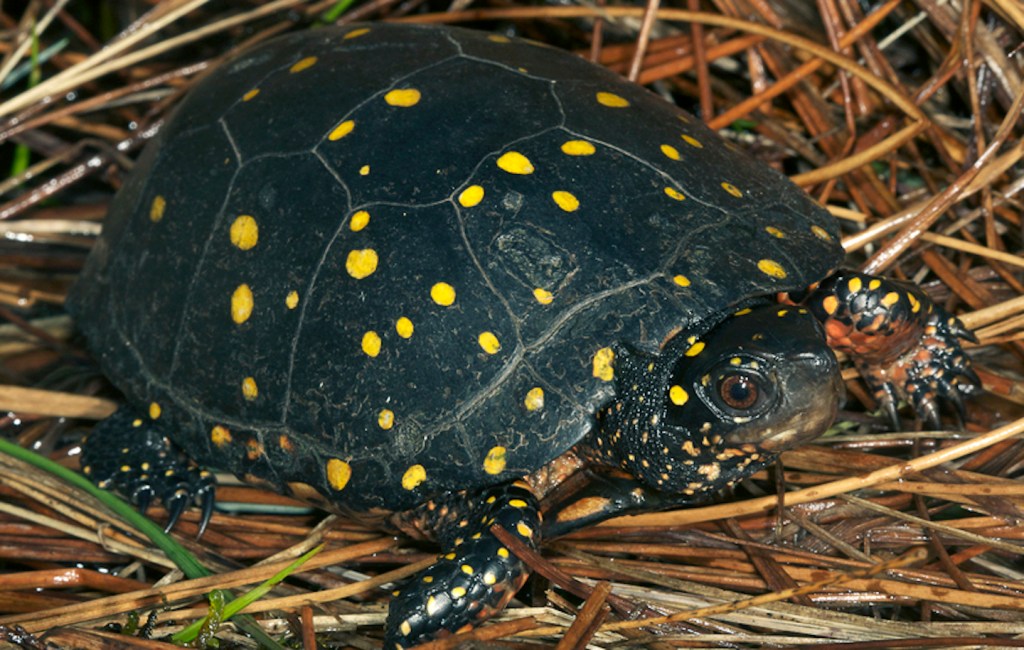Pollution is a greater threat to close to 500 of Canada’s endangered species than previously thought, a new study has found.
Sources of pollution, including excess light and noise as well as military effluent and chemicals, aren’t showing up in national endangered species risk assessments, which ultimately determine what conservation efforts go into preserving those species.
Videos by VICE
Underestimating threats and misclassifying organisms could, in the most extreme cases, see Canada’s species disappear faster.
The study, published Wednesday in the journal FACETS, calculated the geographic overlap between six types of pollution sources and the habitats of 488 Canadian species classed as endangered, threatened, or special concern. Those species included mosses and plants, as well as birds such as the Arctic tern, mammals like the silver-haired bat, and reptiles such as the plains garter snake.
The researchers found that, on average, 57 percent of threatened species’ habitats also had at least one point of pollution, although they noted this varied widely depending on the species. Almost a quarter (22 percent) of species had pollution across their entire range and some areas of southern Ontario and Quebec had more than 15 threatened species and all six types of pollution.
Plant ecologist Jenny McCune says the results were not surprising to her because many threatened species live in the warmer climates where people, and consequently, pollution are also found.
What she and the study’s other authors did find surprising though, is how different their assessment of pollution scope was compared to Canada’s assessment body for threatened species classification, the Committee on the Status of Endangered Wildlife (COSEWIC).
“In many cases they were totally out of sync,” she said. Many of the species that had pollution in their habitats according to the study’s calculations were assessed as having very little or no pollution by COSEWIC.
For example, more than 80 percent of the American hart’s-tongue fern range had sources of pollution, yet COSEWIC considered its pollution scope as non-existent.
McCune thinks the mismatch could be a sign that zero scores are being given based on a lack of evidence, rather than a lack of pollution.
COSEWIC makes its decisions about whether a species is endangered, threatened, or special concern based on status reports written by experts across Canada. As part of those reports, threats, including pollution, are given a score from zero to pervasive. A species’ classification then rests on hours of discussion and a final vote by the committee.
McCune says there needs to be a more accurate way of measuring the scope of pollution, and hopes that this new grid method will help. “Some of us have sat in on these threats calculator calls and sort of felt the imprecision of assigning a score to pollution,” she said. They will present the study formally to the committee this week.
COSEWIC Chair John Reynolds says he welcomes the study and is open to changing their process in the future. “If there are things we can do differently, then we’ll do it,” he told VICE.
The scope of pollution is only part of the equation. The new study doesn’t estimate the severity of those pollution sources—only that they exist.
McCune says estimating how pollution affects these species is even more difficult because pollution’s effects are sometimes hard to see. Study co-author and ecotoxicologist Diane Orihel explains that pollution can outright kill an organism but can also have sublethal effects including delaying the development of tadpoles into frogs or making male fish develop female reproductive parts. These can affect species numbers in the long run.
McCune and Orihel emphasize however that pollution in general is woefully underestimated as a threat to endangered species. “We can see the effects threats like habitat loss, human disturbance, and introduced exotic species are having,” McCune said. “But then you have something like pollution; it’s kicking these species when they’re already down.”
Follow Mirjam Guesgen on Twitter.
More
From VICE
-

(Photo By Raymond Boyd/Getty Images) -

Photo: CBS News Detroit -

(Photo by: Will Heath/NBC via Getty Images) -

Screenshot: NetEase
